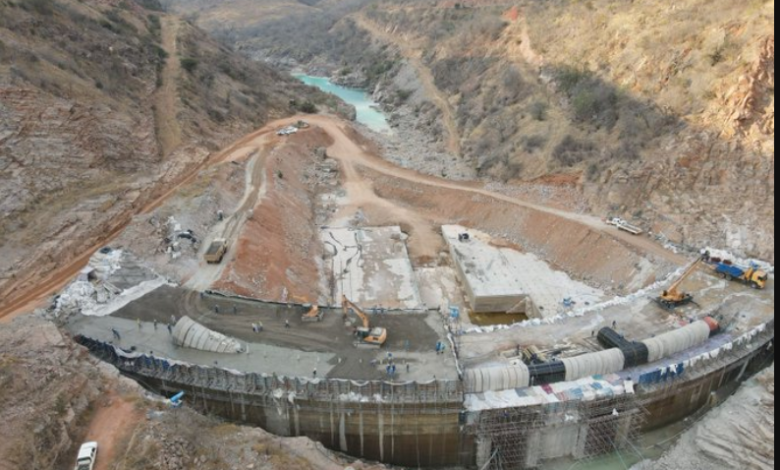Gwayi Shangani Dam: Much awaited project in Matabeleland

The Gwayi Shangani dam will benefit communities of the Matabeleland Province. The semi-arid region of Gwayi Shangani is going to benefit immensely from the dam that is currently under construction. Climate change is causing a number of issues for different nations. Zimbabwe is facing droughts and cyclones. These adverse effects of climate change prompted the construction of dams happening in the country.
The Gwayi Shangani dam construction is still in progress. This is a huge project and communities in the province are waiting for its completion. Progress of the massive water body is on course. Additionally, the project’s initiation in 1912 shows a lot has been going on from then till now. A number of constraints and challenges contribute to the more than century delay of this dam’s completion.
Gwayi Shangani offering water for Bulawayo city and irrigation.
Furthermore, the dam’s holding capacity will be 650 million cubic metres of water. This is just above Bulawayo city’s six supply dams. This shows how big of a project this is. This dam will supply water to the city which is struggling to provide the liquid to its population. Moreso, a pipeline from the dam is set to improve water supply to Bulawayo. Zimbabwe’s second largest city is on the rise in regard to industrialisation. This is after years of neglect and economic hardships.
Additionally, Bulawayo used to be the industrial capital of Zimbabwe and railway centre. The nation’s economic meltdown caused the economic decline of the city. A treatment facility with the capacity to produce 220 Megalitres per day will be part of the project. This will be possible with water from the Gwayi Shangani dam. On top of that, it will be part of the National Matabeleland Zambezi Water Project (NMZWP) to offer a permanent water solution for Bulawayo and the Matabeleland area upon completion.
In addition, the Gwayi Shangani dam will also provide irrigation water to 10 000 hectares in 5 districts. The identification of irrigation pumping points and in-field work designs completion was in February 2022. Furthermore, this is for 2 160 hectares of the first phase of irrigation development. Climate change is real, and prediction of drier spells is set to increase in coming decades in Zimbabwe. Construction of dams such as this is to climate-proof agriculture in Zimbabwe among other reasons. Also, agricultural development will lead to rural industrialisation for better rural economic development.
Power generation and tourism
The project consists of other related components such as power generation and tourism. Incessant power cuts are the norm in Zimbabwe and Matabeleland is not spared. Hydropower from the Gwayi Shangani dam will feed into the province’s electricity grid. Accordingly, this will be a great relief for domestic and industrial users. As mentioned earlier, Bulawayo’s industrial capacity is huge. Therefore, the availability of electricity will boost economic activity of the city and province. Industrial parks and hubs that closed down will have a starting point. They can look for investors with confidence that operations will run smoothly without interference from power cuts. Manufacturers and other business personnel can invest time, money and expertise with little to no disruptions to their operations.
Besides power generation, the Gwayi Shangani dam will also provide tourism. Bulawayo is already a tourist destination. With the Matobo National Park and the Bulawayo Railway Museum, Matabeleland’s tourism will grow because of the dam. Tourists can come and view the hydropower stations and the dam. They can tour the dam just as is done at the Kariba dam. Moreso, this will mean that water activities will be part of the tourism packages of the area. Activities such as speed boating, cruises, water sports and fishing will boost the tourism sector of the province.
Fisheries
The Gwayi Shangani dam will consequently enable communities to invest in fisheries. The close proximity of the water source in a number of areas will encourage investment in this project. Locals can build ponds for their fisheries. They can raise and harvest fish for their own consumption and for selling. The former will improve household nutrition while the latter will improve the household economy. Moreso, this business venture is lucrative as fish is a source of protein many people enjoy and can afford. However, there will be a need for training on how to ensure success of this business, but it will be worth it. Initial costs might be expensive but long-term returns will be worth it.





